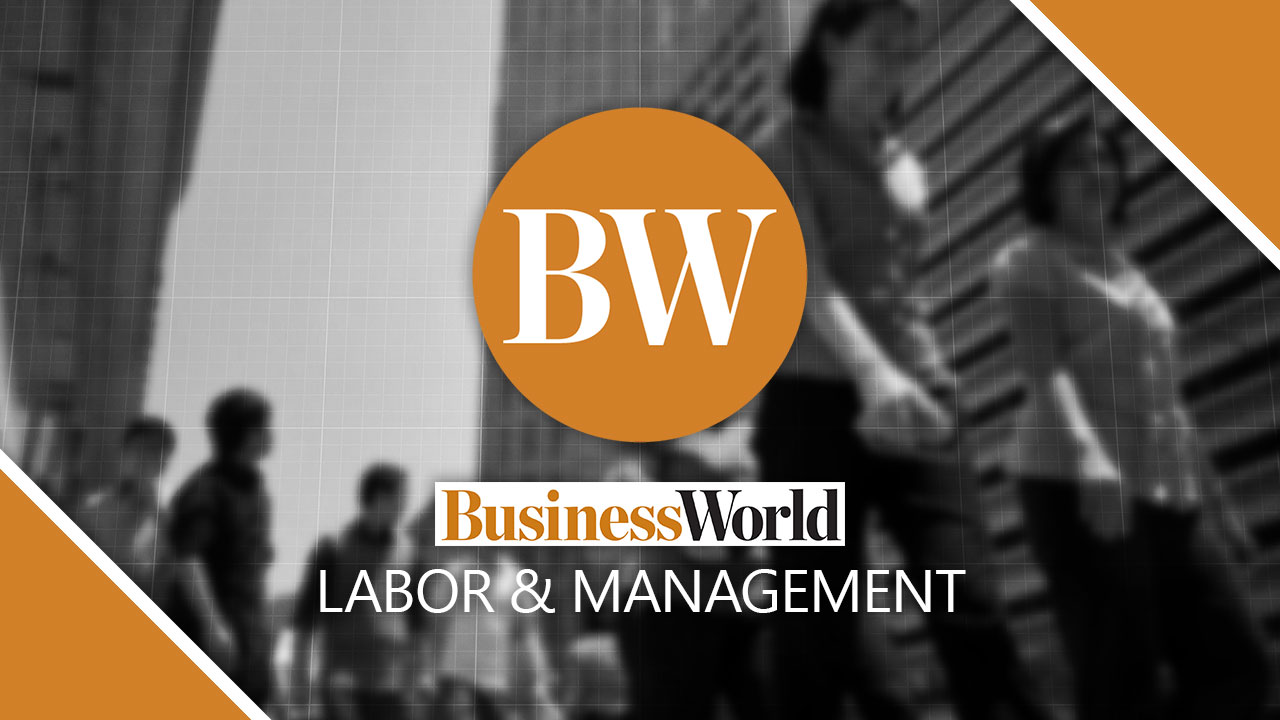
IN THE WORKPLACE
BY REY ELBO

What are the most common management issues that could turn up when workers report at the start of January? — King Philip.
A husband came home from work after a long and terrible day at the office. “Everything went wrong,” he told his wife. “All the bad news came in early morning and lingered until late afternoon. If there’s one thing I don’t want to hear, it’s more bad news.”
His wife replied: “In that case, you’ll be glad to know that three out of your four children did not break their arms today.”
This story could provide hints about how to frame bad news into something acceptable to the recipient. In my experience, we are often apprehensive of what the future holds, particularly after the nearly two years of the pandemic.
But with or without a pandemic, we can’t be complacent about what the future could bring. Of course, there are things that we can’t control and our only option is to manage those things. Our decisions may not be well-reasoned or thoughtful, but just the same, we can’t be too reactive.
Therefore, it’s best to follow your gut and decide based on specific situations. Doing that could lead to a satisfactory outcome or prevent us from making things worse.
COMMON ISSUES
When we keep our ear to the ground, there’s a good chance of overcoming challenges. Therefore, what are the most common issues that can derail our plans for the New Year? Off the top of my head:
One, unexpected resignations. Workers or even managers have been known to resign as soon as they receive their yearend bonuses, profit-sharing, dividends, and the mandatory 13th month pay. Many workers also wait for year’s end to accept job offers from other employers.
Two, low productivity. This happens due to the long holidays that may have helped encourage relaxed attitudes to work. Many have been known to extend vacations for the flimsiest reasons. Family emergencies are likely to come up, as are sick calls.
Three, heightened recruitment. With all the resignations, the human resource (HR) department becomes extremely busy seeking out replacements, or hire temporary workers as a stopgap.
Four, assessment of internal labor supply. HR could take stock of the current workforce and promote them, or offer lateral transfers to promising individuals to give them opportunities to improve or develop a multi-skilled workforce.
Last, management of worker motivation. In order for any business to succeed, all managers must know how to motivate people. The trouble is that, in most cases, line leaders are not capable of inspiring their subordinates for various reasons. Sometimes, the supervisors and their managers themselves are demotivated.
HR PLANNING
All of these can be easily managed when HR masters manpower planning. Such planning is critical for getting the right people to the right situations, even in emergencies. Manpower planning is an important component of strategic HR management.
Without such planning, the organization may not be in a position to recover from business losses or even compete in the marketplace. Without HR planning, we can’t forecast supply and demand for the organization’s manpower needs.
Effective HR planning will also save the organization from incurring unnecessary costs. No business can afford to be understaffed or overstaffed. Overstaffing means paying employees who perform below expectations. This happens when the overall productivity of a department is disguised by high flyers who may be unintentionally covering for their colleagues’ deficiencies.
Fortunately, there are many ways to do HR planning, depending on management style, strategic positioning, the demands of the market, and the competitive environment.
Achieving such a level of planning could be a pipe dream for some organizations, except that it should not be if management is able and ready to meet all the challenges, regardless of circumstances.
Have a chat with Rey Elbo via Facebook, LinkedIn or Twitter or send your workplace questions to elbonomics@gmail.com or via https://reyelbo.consulting